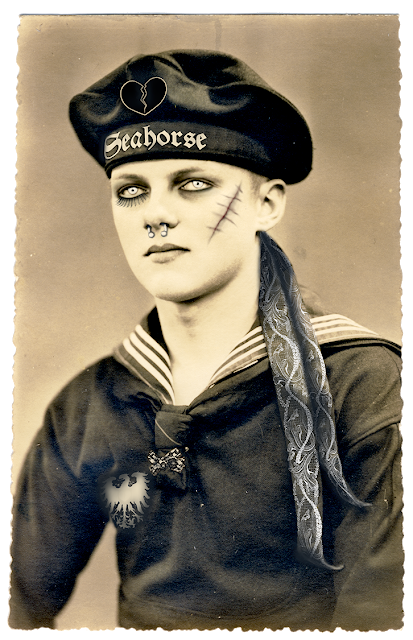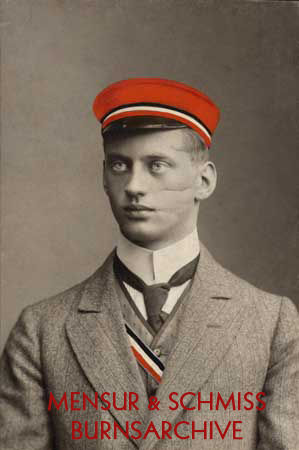Transforming a Kriegsmarine Sailor into a Goth with an Aphrodisiacal Mensur Scar
- Lavavoth

- Jun 6, 2017
- 3 min read



Guided by Ghosts, Grounded by Inquiry
My art-making process often begins with a descent into the ethereal, where I channel ghosts and unseen forces, reaching for that unconscious pulse that threads through the world and the universe. Research rarely obstructs this flow. When it does emerge alongside creation, it tends to deepen the work, illuminating a deliberate path without disrupting the intuitive rhythm—so I never resist the convergence. But when psychic energy leads, the messages that surface almost always mirror the arc of my own life. The facial scar is one such instance. When I first added it to The Knight of Swords: Shadow Warrior tarot card, I did so out of a dark fascination. I won’t deny it—I find facial scars sexy.
Mensurfechten: Fencing in a Confined Space
Historically, the goal was to earn a disfiguring “Mensur scar.”
I hadn’t heard of academic fencing—known as Mensur in Germany and other parts of Europe—until several months after completing The Knight of Swords. Mensur, short for Mensurfechten, refers to fencing within a confined space. These duels are traditionally practiced by student fraternities and occur between two male members of different corps. Historically, the goal was to earn a disfiguring “Mensur scar.”
Many of the Goths in Blind Love bear these dueling scars with pride. Through later research—much to my satisfaction—I discovered that, in Nazi Germany, such scars could be interpreted as subtle acts of defiance.
The Nazi regime officially banned academic fencing in 1933, driving the practice underground and, in some cases, intensifying it. In 1940 alone, over 100 secret duels were reported. The ban was eventually lifted in 1953, and the “sport” continues to be practiced today.
The scars—known as Schmisse—were once considered aphrodisiacs. In fact, the more disfiguring the scar, the greater its perceived appeal to the opposite sex. The nineteenth-century German writer and journalist Otto Bierbaum illustrates this in his 1897 novel Stilpe, where the protagonist remarks, “My fiancée only wants me to have a good-looking schmiss,” underscoring the scar’s erotic and social power. As such, the Mensur scar functioned as a status symbol, often associated with success, financial security, and romantic desirability.
Courage, Self-Confidence, and a Tribute to the Ancestors
Today, German statute defines the purpose of academic fencing as the cultivation of self-confidence and courage, while also honoring ancestral tradition. Although the Mensur scar no longer carries the same cultural weight it once did, I can still appreciate its allure—especially through an archaic and Gothic lens.
Below are several photographs I found online that depict Mensur Schmisse. I’ve also included one of my own: an original photograph of a striking German gentleman proudly bearing his Mensur scar. I found this gem on eBay years ago—long before I knew what a Mensur scar even was.






My photo of the German gent with a schmiss (image above). There is writing on the back but it’s in Sütterlin script, so it’s difficult to decipher. I can make out the date
which reads November 20, 1926 (20 XI 26).

Other sources:
McAleer, K. (1994). Table of Contents. In Dueling: The Cult of Honor in Fin-de-Siecle Germany (pp. vii–viii). Princeton University Press. http://www.jstor.org/stable/j.ctt7ztmf7.2
The Cultivation of Hatred: The Bourgeois Experience: Victoria to Freud by Peter Gay Pg. 30
The German Student Corps in the Third Reich by R G Weber, pg. 168.




Comments